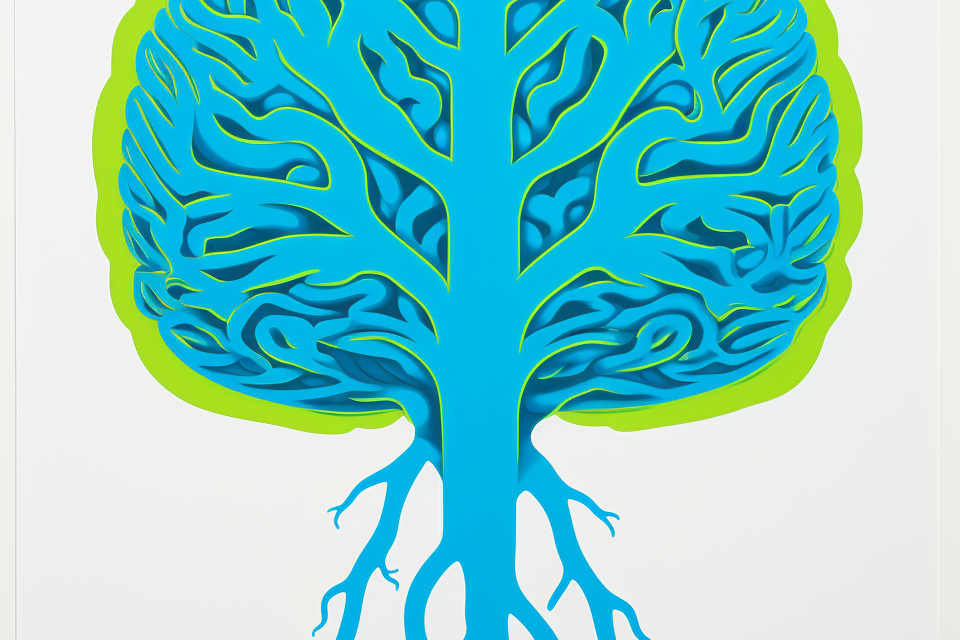Joyful Habits: Investing in Happiness

When it comes to happiness, grand gestures or life-changing events aren’t usually the game-changers. More often, it’s the small, repeated actions—our habits—that determine our well-being. Think of joyful habits as consistent actions that offer not just immediate pleasure but also contribute to long-term happiness. These are your investments in the bank of well-being, offering compound interest over time.
The Importance of Joyful Habits
So why are such habits crucial? Imagine your life as a mosaic, with each tile adding to the complete picture. When most of these tiles are infused with positivity and fulfillment, your overall life picture becomes one of happiness. Increasing your happiness quotient isn’t just about feeling good in the moment; it has far-reaching benefits like enhanced creativity, better health, stronger relationships, and even a longer life. So investing in joyful habits is not just emotionally rewarding; it’s an all-around asset.
Exploring Different Categories of Joyful Habits
In this extensive journey, we’ll dig deep into various categories of joyful habits. From the neuroscience of happiness to how exercise, diet, and sleep affect your mood, we’ll cover it all. We’ll break down mindfulness, gratitude, and positive affirmations to help you understand the ‘why’ before the ‘how.’ We’ll also explore social cues for happiness, like nurturing relationships and the joy of giving. Your environment, too—whether it’s organized spaces, nature, or your personal sanctuary—plays a role in cultivating happiness.
Buckle Up for the Joyful Journey
So fasten your seatbelt for an insightful ride through the landscape of joy. There’s something here for everyone, whether you’re a seasoned happiness aficionado or a newcomer eager to boost your joy levels. What’s the end game? A toolkit to elevate your happiness. So let’s roll up our sleeves and start assembling your mosaic of delight.
The Neuroscience of Happiness
Venturing into the captivating world of neuroscience offers enlightening insights into how our brain experiences happiness. With its complex network of neurons and synapses, the brain serves as the command center for all our emotions, including happiness. The prefrontal cortex, amygdala, and ventral striatum are key players in emotional processing. However, it’s the neurotransmitters—like endorphins and dopamine—that really shift the happiness dial. These molecules act as messengers, transmitting information between neurons.
Meet the Neurotransmitters
Let’s meet the lead characters in this biochemical tale: endorphins and dopamine. Endorphins act as natural pain relievers and mood enhancers. Released during physical activities or stress, they give you that famed ‘runner’s high.’ Dopamine, the ‘feel-good’ neurotransmitter, is central to the brain’s reward system, and its release is triggered when you achieve a goal or indulge in enjoyable activities. Let’s not overlook serotonin and oxytocin, two other key players in this joyful ensemble. Serotonin modulates mood, emotion, and sleep, while oxytocin strengthens social bonds.
The Role of Habit Formation
So, how does habit formation fit into this biochemical picture? The brain craves efficiency. When you repeat an activity, neural pathways strengthen, making future actions easier and more automatic. That’s habit formation in a nutshell. If the habit triggers the release of happy chemicals, you’ve got yourself a self-perpetuating joy cycle. For instance, regular exercise can not only provide an immediate endorphin boost but also program your brain to associate fitness with pleasure.
Building a Life of Joy and Emotional Complexity
Think of it as an emotional investment portfolio: the more you engage in joy-boosting habits, the higher your emotional dividends. The true beauty lies in the ease of maintaining these habits; once they’re set, you hardly need willpower to sustain them. Understanding this science isn’t just intellectually satisfying—it’s a roadmap for creating a life rich in joy and emotional complexity.
Physical Behaviors for Optimal Living
Our bodies are marvels of engineering, designed not just for survival, but for thriving. If scientific research on happiness lays out a blueprint, physical behaviors are the building blocks. Let’s examine some key behaviors for optimal living.
The Power of Regular Exercise
Unquestionably, regular exercise tops the list. Numerous studies back the mood-boosting power of physical activity, largely thanks to the release of endorphins. Exercise is also linked to reduced long-term symptoms of depression, anxiety, and cognitive decline. The key to staying engaged? Variety. Cardio workouts like running and cycling are great, as are strength training exercises for muscle and bone health. Mind-body practices like yoga offer physical and mental clarity. Even a 20-minute walk can be a game-changer.
The Influence of Nutrition and Gut Health
Turning our attention to nutrition, what you eat directly influences your emotional well-being. Foods rich in complex carbs and proteins help produce serotonin, a key neurotransmitter for emotional balance. But let’s go deeper—have you considered your gut health? Emerging research is highlighting the gut-brain axis, a two-way communication channel between your digestive system and brain. Probiotic-rich foods can enhance gut health and, by extension, mood.
Prioritizing Restorative Sleep
Let’s not forget sleep, the cornerstone of emotional well-being. A good night’s sleep aids in emotional processing, memory storage, and ‘mental decluttering.’ Sleep deprivation has links to mental health issues like anxiety and depression. So, how to secure restorative sleep? Consistency is key, along with a relaxing bedtime routine and limited screen exposure before sleep.
Creating a Holistic Tapestry of Physical Habits
The synergy between these physical habits is clear. When practiced regularly, they create a holistic tapestry of activities that enhance both your physical and emotional landscapes. They’re not quick fixes; they’re long-term investments offering compounding returns in the form of lasting happiness.
Psychological Habits for Well-Being
Don’t underestimate the powerful universe within you. Our mental faculties are like an internal toolkit, ready to help us build a more fulfilling life. Let’s delve into some psychological habits proven to enhance well-being.
Mindfulness and Meditation
First up, mindfulness and meditation. Far from mere buzzwords, these practices bring us into the present moment, offering benefits like stress reduction and emotional balance. To begin, simplicity is key. Guided meditations are a great starting point, or you can simply focus on your breath for a few minutes each day.
Cultivating Gratitude
Next, consider gratitude journaling. It’s not just about feeling good; it’s a complex psychological state that triggers a cascade of beneficial neurotransmitters. To maintain a gratitude journal, jot down three things you’re grateful for each day. This simple act can shift your mindset and elevate your mood.
Harnessing the Power of Positive Affirmations
Positive affirmations also play a role. While they’re not a silver bullet, constructive self-talk can reshape your subconscious and, consequently, your reality. Make your affirmations specific and positive, like saying “I am courageous in facing my fears.”
Embracing a Growth Mindset
Lastly, embrace a growth mindset, valuing the journey and viewing challenges as growth opportunities. To cultivate this mindset, reframe setbacks as learning experiences, seek out challenges, and welcome constructive feedback.
Your Internal Allies for Well-Being
These psychological habits are your internal allies, equipping you with the resilience and positivity to tackle life’s challenges. The best part? They’re accessible to anyone willing to take that first step. So why not take the leap today and start fortifying your internal well-being sanctuary?
The Social Dimension of Happiness
The social dimension of our lives serves as a catalyst for personal growth and joy. Interpersonal relationships mirror our qualities, both good and bad, offering numerous opportunities for enrichment and pleasure.
Nurturing Tight-Knit Relationships
First off, let’s talk about nurturing tight-knit relationships. Social ties aren’t mere niceties; they’re crucial to our well-being. Research indicates that robust social bonds rank highly among the key factors of happiness and longevity.
You might wonder how to cultivate such bonds. The magic word here is consistency. Routine check-ins, honest conversations, and shared moments can all help strengthen these connections. And remember, small gestures like a quick ‘hello’ text, remembering important dates, or simply being there when needed can make a big difference.
The Transformative Power of Kindness and Volunteering
Next, let’s delve into the transformative power of kindness and volunteering. Giving uplifts not just the receiver but also offers the ‘giver’s glow,’ an actual boost in happiness and satisfaction.
Here’s the real beauty: kindness generates more kindness, creating a ripple effect that can positively shift the world, one simple act at a time. So where to start? It could be as straightforward as holding a door, buying someone’s coffee, or volunteering at a community center. The aim is to find ways to give that resonate with you, ensuring the act isn’t just generous but genuinely heartfelt.
Active Listening and Empathy
Finally, let’s address active listening and empathy—cornerstones of meaningful conversation. We often overlook that communication is a two-way street, and simply being there for someone in a conversation can be as impactful as the discussion itself.
The payoff? Enhanced relationships, decreased stress, and a genuine sense of mutual respect and understanding. To be a better listener, make eye contact, nod to show engagement, and curb the urge to formulate your reply while the other person is still speaking. The goal is understanding, not just fast problem-solving or sharing your own narrative.
The intricate tapestry of human interaction holds boundless potential for boosting happiness. What’s stunning is that these social techniques not only enrich your emotional life but also positively impact those around you. They’re essentially gifts that keep giving, rippling through your social circles and beyond. So why not weave some of these social practices into your own life and reap the benefits for yourself?
Creating a Positive Environment for Happiness
Your external environment often mirrors your internal state, and vice versa. Your mental well-being can significantly benefit from how you shape your surroundings. Let’s explore some environment-related practices that go beyond aesthetics to genuinely enhance your happiness levels.
Organizing and Decluttering
Firstly, consider organizing and decluttering. It’s fascinating how physical clutter can translate into mental chaos. Numerous studies suggest that an orderly space fosters better focus, reduces stress, and elevates well-being.
So how do you keep your area tidy? Start by pinpointing and tackling the zones where clutter gathers. Use the ‘one in, one out’ principle to maintain equilibrium and stave off clutter. Dedicate regular intervals to clean and organize your space—even 15 minutes daily can make a difference.
The Therapeutic Power of Nature
Moving on to the therapeutic power of nature. The great outdoors isn’t just for adventurers and poets; scientific evidence supports its mood-enhancing effects. Practices like Shinrin-yoku, or ‘forest bathing,’ have been shown to lower stress hormones, decrease anxiety, improve mood, and sharpen focus.
Your options? Consider hiking, biking, or simply taking a leisurely walk in the park. Even brief encounters with nature, like gardening or sitting under a tree, can be refreshing.
Creating a Personal Sanctuary
Last but not least, ponder the serenity that comes from creating a personal sanctuary—a space tailor-made to your needs and preferences. Having a dedicated relaxation or contemplation area can act as a mental oasis. This doesn’t require a complex setup—a cozy reading corner, a tranquil balcony, or even a dedicated section in a room filled with items that spark joy can work.
Populate this area with elements that positively engage your senses, such as comforting textures, pleasing colors, calming sounds, or delightful scents.
In conclusion, these environment-focused practices serve as quiet yet potent architects of your happiness. They subtly influence your mindset, shape your interactions, and create a positive backdrop for your life’s unfolding. This is not just about keeping a tidy house or enjoying weekends outdoors; it’s about actively crafting a life space that bolsters your happiness and well-being. Give these routines a try; you might be amazed by the positive shifts they generate.
Navigating Obstacles in Habit Formation
The journey toward habit development is seldom linear; it comes with its twists, turns, and hiccups. Understanding the dynamics of this voyage is essential for staying resilient and focused. So, let’s examine how to navigate the inevitable obstacles you’ll encounter while forming new habits.
The Concept of Habit Loops
The first step is grasping the concept of habit loops. Think of your brain as an energy-saving expert, always looking for ways to conserve effort. It does this by creating habit loops, made up of a cue, a routine, and a reward. The cue triggers the routine, which leads to a reward, reinforcing the loop.
To leverage this to your benefit, identify the cues and rewards that underpin your existing habits. Then, remix these elements to fashion a new, healthier routine. For instance, if stress (cue) prompts you to snack on junk food (routine), which offers momentary relief (reward), consider swapping the snack for a brisk walk or deep breathing.
Embracing Setbacks and Learning from Failure
When setbacks occur, first, reframe your view of failure. They’re not dead ends but valuable feedback loops that steer you right. Embrace setbacks as part of the tapestry of self-improvement.
To bounce back, pinpoint and address the factors that triggered the mishap, and adjust your approach accordingly. This could involve tweaking your routine or recalibrating your goals to make them more immediately achievable.
The Role of a Support Network
This brings us to the crucial role of a support network. In the realm of personal development, no one is an island. A supportive community can offer emotional backing, constructive criticism, and accountability.
To find your support circle, begin by openly sharing your goals with friends, family, or online communities. Those who share your objectives will naturally be inclined to help. Tech tools like habit-tracking apps with social features or online forums catering to your specific goals can also be helpful.
In summary, this is your road map for tackling the common challenges in habit formation. Remember, long-term happiness isn’t about avoiding challenges but skillfully navigating them. By understanding habit loops, embracing failures as learning opportunities, and tapping into a support network, you arm yourself with the resources to make your journey not just manageable but deeply rewarding.
Your Personal Journey to Lasting Happiness
Navigating the intricate maze of happiness may seem like a Herculean task, but as we’ve explored, it’s an adventure well worth undertaking. From the molecular foundations of joy to actionable physical routines and the complexities of psychological and social habits, we’ve delved into a broad spectrum of practices that serve as stepping stones on your journey to lasting happiness. Let’s not forget the role of your environment and the courage needed to navigate challenges in habit formation.
Don’t let the scope of these habits intimidate you. The beauty of personal growth lies in its individualized nature. Think of these suggestions as a buffet, not a fixed menu. Experiment, mix and match, and discover what resonates with your own lived experience. Remember, the best habit is the one that sticks, and the one that sticks is often the one that speaks most directly to you.
So here’s the most crucial part: your call to action. Don’t wait for a celestial sign, a fortuitous date, or a seismic life event to spur you into action. The best time to plant a tree was 20 years ago; the second-best time is now. The same principle applies to your happiness. Each moment that passes is an opportunity to make choices that align with your well-being. Start today, not with grand declarations, but with small, intentional steps.
Let this be your first step on a fruitful journey toward building habits that won’t just uplift you but will enrich your life in unimaginable ways. Onward and upward!



